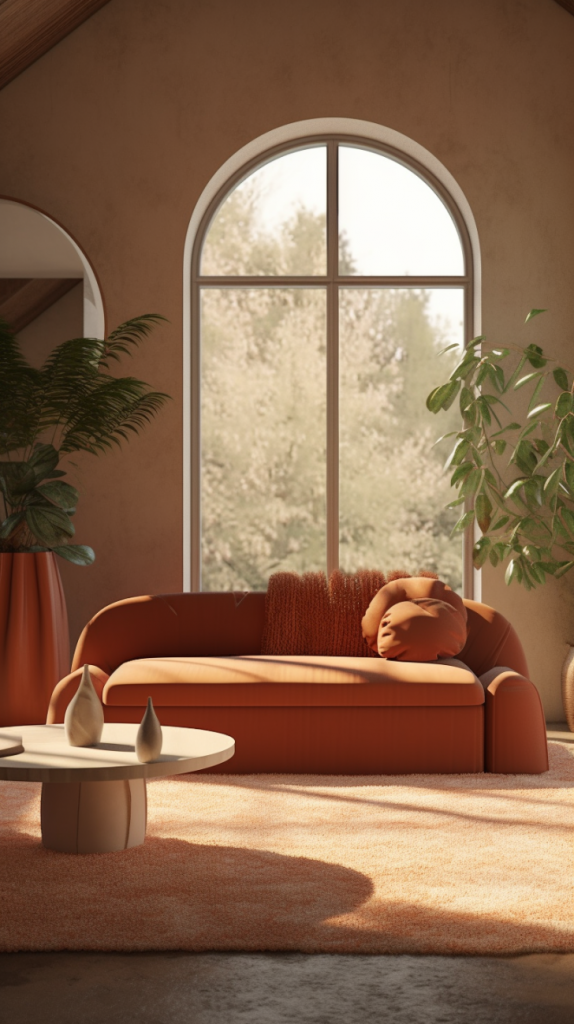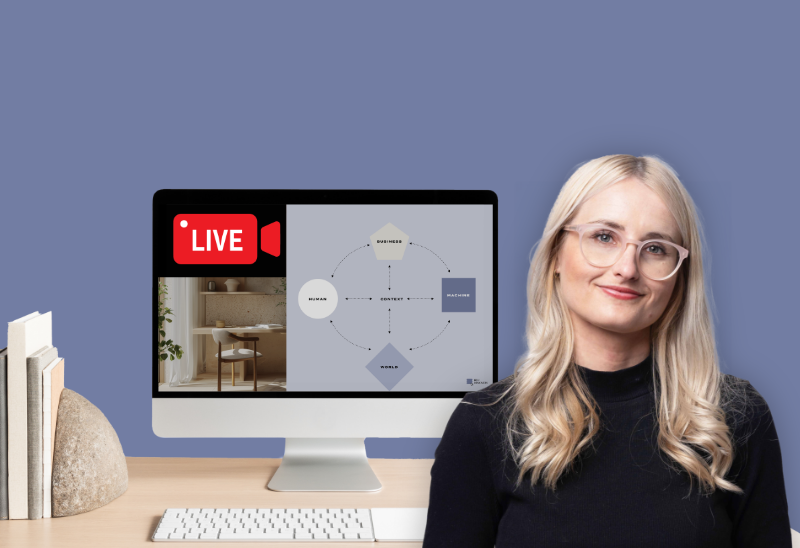Why stealing ideas from science fiction will kill UX! Top 5 future trends for our interfaces (2020)

Please, don’t get ”inspired” by science fiction!
But what is the first thing that comes in your mind when you think about interfaces of the future? Probably things we have seen in movies like iron man or star trek.
There are some good reasons for not using start trek etc as a reference for the future and I will share some thoughts about future interfaces in this article.
Besides that, I am going to point out 6 future trends for interfaces.
During the residency at Adobe, I focused on the future — especially on the future of UX and interfaces in general. What always fascinates me is seeing technology that is integrated into people’s natural way of working and living and doesn’t need any explanation (like all good UX usually is).
Watching science fiction characters interact with technologies looks exactly like that. If we think about Tony Stark using gestures to interact with Jarvis building his tank or mister Spock from Star Teck finding exactly the information he needs on an interface, although it might look kind of messy for our eyes.
So, let’s be honest, that’s fascinating.

Why are science fiction interfaces so fascinating for us?
Of course, it’s the usability but another point is, I guess, the Storytelling.
Science fiction is based on storytelling. It is all about the hero and their story, technology is just there to support that. And let’s be honest: Science fiction is not design fiction. You or the user might not be the hero (at least that’s the feeling I get talking to Alexa or Siri most of the time).
Copying things from movies will result in losing trust in technology. When science fiction and pop culture come together it can be extremely frustrating because real life is not like in the movies.
What are the problems at the moment?
We’re at the same point when it comes to our interaction with technology, in particular with graphical user interfaces like computers and smartphones.
Today, we spend more than 7 hours a day looking at screens. When I look at my friends and myself, it’s more like 10+ hours a day.
Since the introduction of the smartphone, we have started to fill every gap in our lives, from the moment we get up in the morning (35% check the web before getting out of bed), until the time when we go to sleep.
The benefits come with negative side effects like the growing inability to share our undivided attention with others, the inability to separate work and private life, the inability of children to learn empathy, the inability to reflect thoughts which is a prerequisite for mental health and creativity or even addiction and withdrawal symptoms (37% of UK adults and 60% of teens self-report “addiction”).
There are more problems that not only come from the amount of time we spend looking at screens but from the design of screens themselves like accessibility to old or handicapped people, time to action, cognitive load, muscle strain or limitations in human capabilities.
One half sees screens and the smartphone as the go-to solution for human-computer interaction (HCI). The other half is hoping for something different. Some companies like Ford and Philips have already reacted by introducing physical user interfaces. At the moment we are struggling with too complex interfaces, jargon, hierarchy problems, consistency, creating graphical elements.
I believe that user interfaces will fundamentally change. The reason why they haven’t done so thus far is because of several barriers that are now falling.
So enough talking about how interfaces won’t look like, how do interfaces of the future WILL look like?
The future of interfaces — top 6 areas
- All senses
Graphical user interfaces have many limitations. They are not accessible to visually impaired or handicapped people. They only use visual sense and a reduced version of haptics. They can have straining effects on our hands, neck or eyes.
So, future interfaces will be designed with human biology and psychology in mind. They will integrate more of our human senses. Once the iWatch becomes a mass phenomenon, people will get used to consuming information through different senses. Other more futuristic interfaces will use our brain waves or body movements for example.
Trying to do the wrong thing right doesn’t make them better. The light switch is still the best example. No matter how intuitive you try to make an app that controls your smart lights, the experience will probably be worse than getting up and hitting a light switch. The large number of people that stop using their smart devices after a few days is proof of that. Future interfaces will ignore the assumed integration with graphical user interfaces and will focus on making things simpler than existing solutions for example by integrating voice design.
2. Hierarchies
Another thing which is fascinating for me is that the interfaces in science fiction movies are kind of messy and don’t have a lot of hierarchies which makes it quite difficult to get a quick understanding of the situation. You usually see a lot of visuals, tiny typography, and not more than 3 or four colors.
Science fiction — hierarchies are nowhere in science fiction. Although there are super important things for getting a task done or getting the right information.
The future interface will focus on hierarchies, like all good designs are already doing right now. If we think about the power of artificial intelligence, it will get easier to understand and know what is the most important information for the user. So, the interfaces might be adjustable based on the needed hierarchies to solve a problem, get a task done.
3. Voice
Voice interaction feels so natural. Like a usual conversation. I strongly believe that Voice is like Google-search in 15 years.
Do you remember the time when we all typed a real web address like www.adobe.com? Since internet explorer integrated the possibility to search in the browser most people use Google to look for websites.
If you would tell this a webdesigner 15 years ago, no one would probably believe that. But in the end, convenience wins always. What is easier than google for the specific topic you look for “adobe blog UI Kit” rather than look on the website yourself for that article.
Imagine how easy it will be with voice, no typing, just natural voice conversation like with a friend who can ask for specifications and find the right content for you.
There is one movie that focusses on voice user interfaces. I guess many of you know this movie. It’s called “her” where the main character, Theodore, interacts with his digital assistant mostly via voice. And what is so exciting about this movie is that those conversations feel incredible natural, it’s like talking to a friend. Besides that Samantha always understands the context and is much smarter than any human because of her AI integration. Comparing that with the current situation with our smart assistants at the moment, talking about Alexa or Siri, etc. we all know that they still need a lot of time and a lot of data to get trained.
But we have time.

4. Augmented
The digital and physical world will blend together. Be it through augmented reality glasses or smart contact lenses or not, you will be able to read context information about a broken motor not through your phone but directly in the surrounding “space” of the object.
Technology can be stressful with the anxiety of pop up notification or the inability to differentiate between work and private life. Technology will not be in the foreground anymore. It will assist people in their lives and blend information into their world. It will disappear into walls, tables, micro projectors or glass.

5. Task focused
This is already a major trend in HCI. You won’t need to trigger every action manually anymore, but sensors will do that job for you. Examples include the garage door that can track when you’re getting close to your house or lights that turn on automatically when you’re walking into a room. Anticipated design — selecting all the data enables interfaces to really “understand” what the next step might be. The systems get better and better and help the user to use interfaces as naturally as possible. It will get easier to predict certain interactions and flows analyzing user data.
6. Natural
A race driver would never replace his physical wheel and buttons for a tablet. A musician would never replace his guitar. Haptic and tangible interfaces have value. It allows you to use your motoric memory and a multitude of senses (like haptics, awareness of positioning, the sound of a click and vision). It allows you to interact with technology in the most natural way.
Back to physical inputs, which are easier to use and more accessible.
We remove a lot of those physical elements when it comes to digital interfaces like smartphones or laptops etc. So there are tendencies towards going back to physical inputs. This could be some kind of physical input that you use as some kind of input for augmented reality.
I am especially excited to see how this area evolves.
TLTR!
Let’s wrap this up
NO interface is the future! The more natural it feels, the better.
- Voice design will become super important in the future although this doesn’t mean voice only but more voice first. We will still have interfaces which are much more integrated into our surrounding.
- Because of AI and machine learning, it will become easier to adjust and personalize interfaces for the user, so hierarchies and minimalism will become more important.
- We will integrate other senses like smell, touch, gestures, etc. I don’t know how but we will figure that out.



